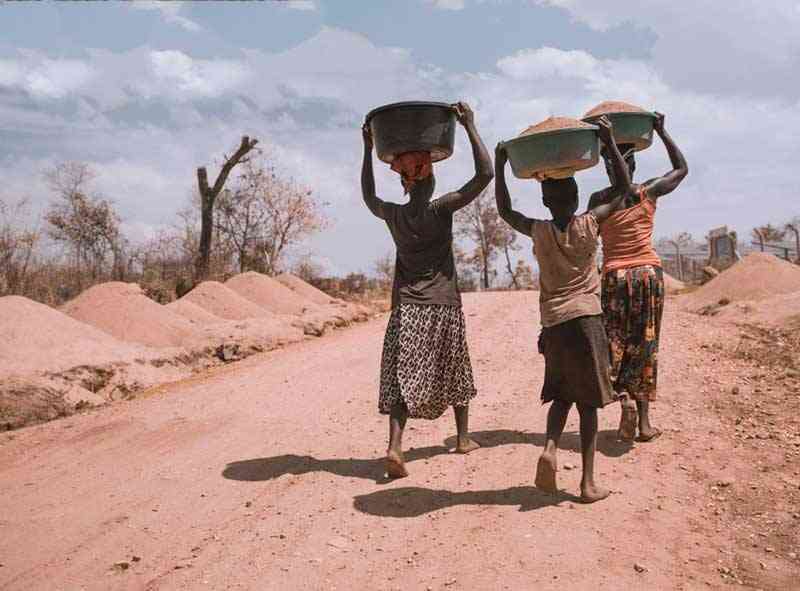
THE topical and cross-cutting nature of climate finance can never be underestimated or rather over-emphasised. Climate finance can never be wished away or paid lip service to, as it is a fundamental component of green finance.
Climate finance has been specifically established for climate change mitigation and adaptation practices in developing countries. As a result of climate finance being at the heart of the United Nations Framework Convention on Climate Change (UNFCCC) Paris Agreement (Article 9), of COP21 in 2015, it cannot afford to be captured or capture the institution that manages and distributes it.
Climate finance was established as a result of the proposed commitment of the developed countries to mitigate and adapt to climate change in order to realise transformation, resilience and decarbonisation.
Ever since climate finance has been established, it has become a controversial and contested entity for the developing countries, both as a form of bailout or development assistance.
This has resulted in climate change knowledge controversies and hard-hitting debates pitting developed against developing countries. Issues of climate reparations or compensation always dominate the UNFCCC Conference of Parties (COPs) negotiations.
Before interrogating issues about whether climate finance is captured or not, it is important to note, where climate finance comes from, who controls, manages and disburses it? Climate finance comes from developed countries or rich polluting nations, it is controlled by multilateral financial institutions such as the World Bank, Global Environmental Facility, Green Climate Fund, Global Adaptation Fund, among others.
Climate finance is a discourse easier to articulate, but never easy to understand and implement. Even developing countries that have since benefited or are set to benefit, have challenges in explaining what climate finance is all about.
Knowledge controversies and contestations with regard to the disbursement of climate finance, on the part of developing countries, led to the developed countries exploiting the knowledge of finance and procedural gaps, thereby abusing the status of climate finance. The fact that climate finance has not been released timely, smoothly and meaningfully, at the behest of the developing countries, led to the whole facility being viewed as captured, commodified, manipulated and politicised.
- AfDB approves Energy Access Finance Framework
- AfDB approves Energy Access Finance Framework
- Foregrounding the capture of climate finance to developing countries
- Why developing countries pin their hopes on climate finance?
Keep Reading
It is lack of democratisation, perceived partialities and climate injustices that would want to see climate finance being decolonised and deconstructed to appeal to climate justice.
This is due to the fact that, what climate finance means to developed countries does not seem to mean the same thing to developing countries thereby setting the stage for hot debate, procedural and structural gaps.
Where developing countries want commitment from developed countries, developed countries appear not in any hurry to level matters.
While it is in the public and professional domains that some billions of dollars have been disbursed by now to selected developing countries, it is lack of timeliness, adequacy and prioritisation which are cause for concern. Within the context of developing countries, some countries are preferred to others although climate change knows no boundaries.
Even judging from the available assistance, very few countries have accelerated renewable energy innovations and transitions to low carbon economies. In this regard, energy poverty is both an equity and equality gap, as a result they prefer to call this the “blind spots” instead. The development of new business models and green technologies still favour the rich and developed nations because they prescribe, innovate, commercialise and run and control green energy markets.
That is why the issue of climate change-induced losses and damages is not at the heart of the developed countries’ recovery agenda as they include sector-specific and contextualised economic and non-economic costs. The painful truth is that the global emission reduction targets continue to increase rather than tone down. This still foregrounds the contentious issue of carbon finance, markets and trading.
Although the management of climate finance is viewed as being one sided, developed countries own the leading military and aviation industries.
Their holding on to climate finance may be a protest call to developing countries to be accountable, create investment opportunities, fight corruption and human rights abuses, among others.
With regards to developed countries, some sectors they control like military and aviation industries, are still leading emitters of carbon, but they are not talked about. One is forced to believe that they do not exist yet military hardware, aviation industries and mining are carbon emission intensive.
It is also in the best interests of developing countries to continue abiding by climate finance trajectories, but it is also high time they started thinking outside the climate finance box and diversify. All evidence point towards climate finance being captured, abused and selectively disbursed but that does not stop developing countries from developing from within and accelerate home-grown solutions that are people centred.
It is common knowledge that developed countries may be preoccupied with the plight of Ukraine rather than climate solutions for developing countries.








